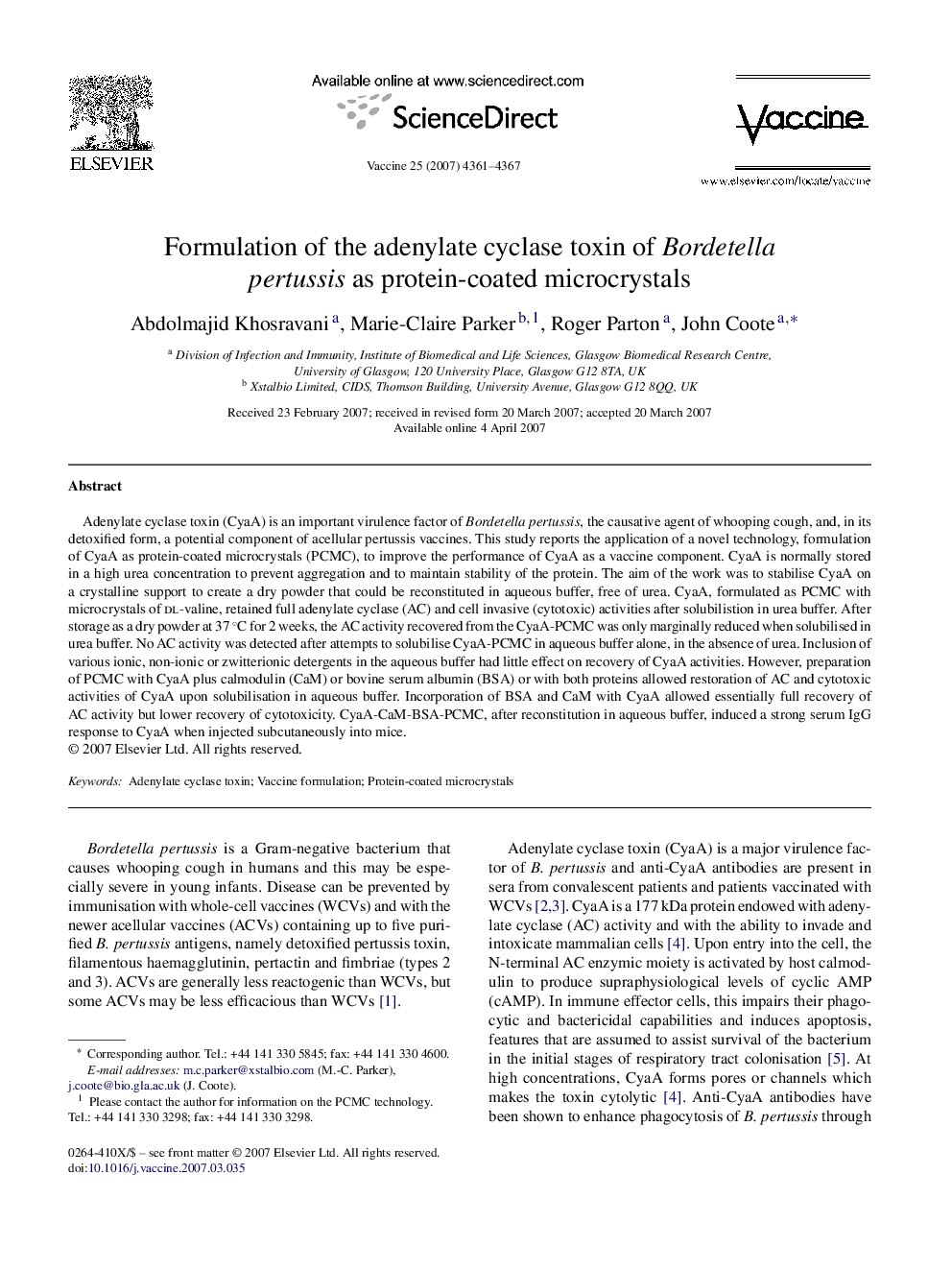| Article ID | Journal | Published Year | Pages | File Type |
|---|---|---|---|---|
| 2409083 | Vaccine | 2007 | 7 Pages |
Adenylate cyclase toxin (CyaA) is an important virulence factor of Bordetella pertussis, the causative agent of whooping cough, and, in its detoxified form, a potential component of acellular pertussis vaccines. This study reports the application of a novel technology, formulation of CyaA as protein-coated microcrystals (PCMC), to improve the performance of CyaA as a vaccine component. CyaA is normally stored in a high urea concentration to prevent aggregation and to maintain stability of the protein. The aim of the work was to stabilise CyaA on a crystalline support to create a dry powder that could be reconstituted in aqueous buffer, free of urea. CyaA, formulated as PCMC with microcrystals of dl-valine, retained full adenylate cyclase (AC) and cell invasive (cytotoxic) activities after solubilistion in urea buffer. After storage as a dry powder at 37 °C for 2 weeks, the AC activity recovered from the CyaA-PCMC was only marginally reduced when solubilised in urea buffer. No AC activity was detected after attempts to solubilise CyaA-PCMC in aqueous buffer alone, in the absence of urea. Inclusion of various ionic, non-ionic or zwitterionic detergents in the aqueous buffer had little effect on recovery of CyaA activities. However, preparation of PCMC with CyaA plus calmodulin (CaM) or bovine serum albumin (BSA) or with both proteins allowed restoration of AC and cytotoxic activities of CyaA upon solubilisation in aqueous buffer. Incorporation of BSA and CaM with CyaA allowed essentially full recovery of AC activity but lower recovery of cytotoxicity. CyaA-CaM-BSA-PCMC, after reconstitution in aqueous buffer, induced a strong serum IgG response to CyaA when injected subcutaneously into mice.
